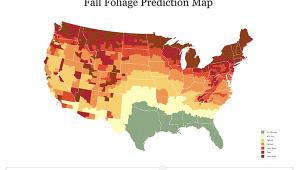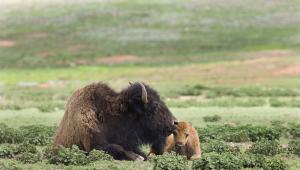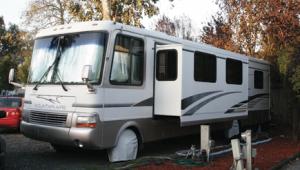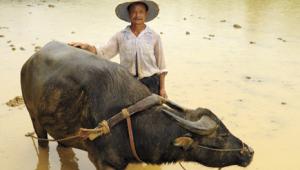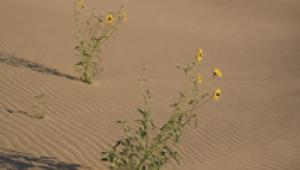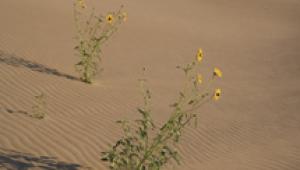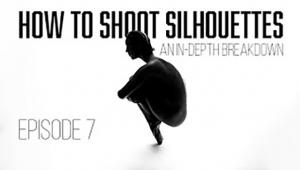Bad Weather, Good Photographs
When The Going Gets Tough
| The real adventure of photography is being passionate about creating images that reflect your view of the world--not the repetition of someone else's ideas. To produce great images, you'll sometimes have to brave the elements. Are you ready to take your camera out of its protective case and drag it out into the rain or snow; to get up in the middle of the night to make images of the sunrise? Will you miss dinner for a beautiful sunset? Would you sacrifice a good night's sleep for a shot in the dark? Are you prepared to hand hold your camera at shutter speeds of 1/8 or 1/4 of a sec? Will you shiver on a cold winter's night? Are you willing to expose your film when the in camera meter screams "underexposed"? If you answered yes to any of these questions, keep on reading. The Urban Landscape. Photo-graphing the elements can be a humbling experience. Mother Nature unleashes incredible powers, dwarfing humankind with her fury. If you have been caught in a heavy cloudburst, a fierce windstorm, hailstorm, near a hurricane, in the path of a tornado, a desert sandstorm, a blizzard, or soaked by a thunderstorm with deadly lightning striking around you, you know the feeling I'm talking about. In cases like this, there seems to be nothing you can do except wait it out. Maybe not. You could be making photographs while you wait. The elements provide the backdrop and subject matter for many photographs. To capture these images, a photographer must be willing to uncover his or her precious camera and risk getting it wet. Don't worry, your camera can take it. Modern cameras are well sealed and a little bit of rain or snowfall won't penetrate their interiors. Of course, you'll need to take a few precautions to protect your camera between exposures. You can tuck the camera inside your coat, put a plastic bag over it, or place it back inside a (hopefully) waterproof camera bag. Under these kinds of conditions, you won't melt and neither will your camera. Even in non-El Niño years, the weather is news and newspaper photographers are often sent out to make an image of "the weather." The photograph of the diner with steamed windows by photojournalist Barry Staver was made during a frigid January night in Denver. Outside the diner, the temperature was below zero. It was so cold that few people ventured out during the night, thus finding a suitable image proved difficult for the photographer. Driving around the normally busy city streets and well lit parks provided no signs of anything that would make a good cold weather photograph. After four hours, Staver spotted this diner that was located in the same block as his newspaper's office. Because of the evenness of the illumination, the scene was easy to meter through the camera's lens. After he had made four or five exposures, the men seated at the counter stood up to leave, the cook saw the photographer, and the moment was gone. If he had taken the time to set up a tripod or go inside to take a handheld meter reading, the picture would have been lost. In this case, the camera's built-in meter did a great job. Most lightning shots are made from a distance so that a cityscape or landscape can be included as framing for the composition. With the city placed in the foreground and background, the resulting photograph can be dramatic as well as provide a measure of safety for the photographer. A typical summer day in Denver begins with a blue sky and warm to hot temperatures, that gradually shifts to a stormy afternoon. Weather in the form of dark, ominous clouds often roll in from the Rocky Mountains west of the city. In less than 30 minutes a nice day can become a dark and stormy one, followed by clearing, a beautiful sunset and pleasant evening. Nevertheless, you don't want to be out and exposed in a lightning storm. Lightning can kill people--including photographers. The storm shown in the illustration lasted into the evening, with strong winds, torrents of intermittent rain, and lots of lightning. There wasn't enough time for Staver to drive out of town to shoot back toward the lightning strikes, but such photographs usually need contextual matter for framing and interest. Instead, a park with a pavilion surrounded by high-rise apartments and tall trees provided a great foreground. Staver's car provided shelter and a serendipitous tripod to make the series of exposures that resulted in the image that appears here. To eliminate extraneous camera vibration, the car's engine was turned off. It then became a matter of luck and Staver's willingness to expose a lot of film to capture a lightning bolt at the same time the shutter was open. Several frames had small lightning strikes in the distance and several frames were blurred and unusable but it was not until the film was processed that Staver discovered this treasure. Was it worth 72 exposures? He thinks so. The Winter Landscape. The photograph of a snow covered tree made by fine art photographer Bill Craig was the result of two years of watching and waiting for the tree to grow and the right weather conditions to exist. Craig told me, "I remember the first time I saw the tree and thought how amazing it would look a little larger and covered with snow." He almost became obsessed by the tree and often went to visit it. Then one morning about 2:00am, he woke from a sound sleep and looked out of the window to see large flakes of snow coming down from the sky. The first thought that entered his mind was "the tree!" After two years, this was the day he'd been waiting for. Craig was so excited he found it hard to get back to sleep. Later that morning, he drove to where the tree was located. By the time he got there, the sun was up and he saw the tree clothed in the glory of the fresh snow. It had stopped snowing, but the sun was diffused by clouds and the light was soft. Craig already knew where to set up his Mamiya RB67 Pro S with 90mm lens. For the finished image, he used an average overall meter reading but wanted to expand the contrast to make sure the texture of the snow would be accented. He planned on adding 20 percent on the developing time and to compensate for the increased development time he underexposed by a half-stop. Expanding the tonal range, he feels, causes the tree to stand out from the rest of the image. The light along the upper and side rim of the tree reflecting at a 90° angle to the camera gives the tree a distinct edge that separates it from the background. The photograph that Craig calls "Always Winter but Never Christ-mas" was made while he was cross-country skiing. The first rule of skiing is not to ski out of control and for some skiers this means don't bring a camera, but Craig often takes his 4x5 Zone VI camera on such trips to capture images that others only get with 35mm. Other than backpacking, one of the best ways of taking large format equipment into the wilderness is to buy or rent a cross-country ski sled and pack your equipment on it. On the day this image was made, there was light snow falling and the lighting was flat. Craig likes flat lighting because it makes it easier for him to get shadow detail in his images. This image was shot using his Zone VI camera, a 210mm Rodenstock lens, and Kodak Tri-X film. He considered using a green filter to lighten the trees but was concerned about losing some detail in the shadow areas and decided to deal with trees in the darkroom by printing the image on grade 1 paper instead of his normal grade 2. Craig's photograph of aspen trees was made while snow was still lightly falling in the mountains near the quaint Victorian town of George-town, Colorado. He had driven past this particular grove of trees many times, but on the day he made the image, he had to drive through a foot of fresh snow that had not yet been plowed. It was quite a challenge even with four-wheel drive. After parking the car, Craig had a 20 minute hike through the snow while lugging his 4x5 camera. At the spot where he wanted to make the image, the snow was almost waist deep and moving about was difficult. The best way to get there would have been on skis, but he didn't have them with him. Once he decided to make this image, he had two methods for working under these conditions. One is to have the baskets from ski poles taped to the bottoms of the legs of the tripod, and the second is to pack the snow down with your feet until it's solid enough to hold the tripod. If on skis, you can use them to pack down the snow, which is sometimes easier than taking the skis off--especially if the snow is 4' deep or more. When setting the tripod down, you must be ready to stay where you are because moving about can cause the snow to shift and move the tripod. The secret is to have everything ready before setting the tripod up. That means having the film holder ready, meter handy. In short, be ready to make the image. As the experiences of these two photographers show, what some see as bad weather others see as an opportunity to get unique images made under less than ideal conditions. |
